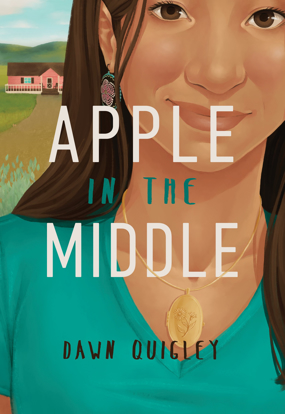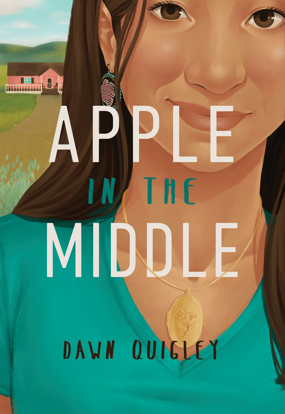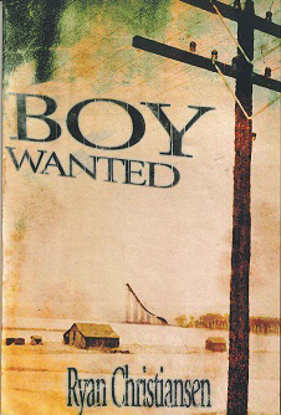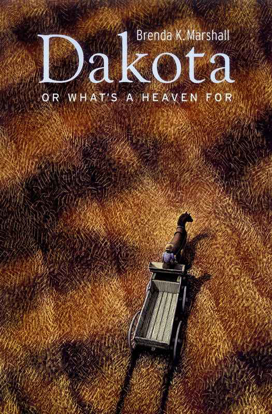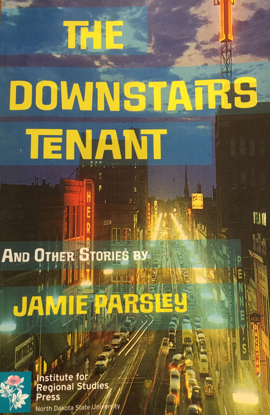Fiction
Apple in the Middle
Apple Starkington turned her back on her Native American heritage the moment she was called a racial slur for someone of white and Indian descent, not that she really even knew how to be an Indian in the first place. Too bad the white world doesn’t accept her either. And so begins her quirky habits to gain acceptance. Apple’s name, chosen by her Indian mother on her deathbed, has a double meaning: treasured apple of my eye, but also the negative connotation—a person who is red, or Indian, on the outside, but white on the inside. After her wealthy father gives her the boot one summer, Apple reluctantly agrees to visit her Native American relatives on the Turtle Mountain Indian Reservation in northern North Dakota, for the first time. Apple experiences conflict as she deals with the culture shock of Indian customs and the Native Michif language, while trying to find a connection to her dead mother. She also has to deal with a vengeful Indian man who has a violent, granite-sized chip on his shoulder because he loved her mother in high school but now hates Apple because her mom married a white man. Yet, as Apple meets her Indian relatives this summer, she finds that she just may have found a place to belong. One by one, each character—ranging from age five to eighty-five—teaches her, through wit and wisdom, what it means to be a Native person, but also to be a human being while finding her place in the world. Apple shatters Indian stereotypes and learns what it means to find her place in a world divided by color.
Debut Young Adult Native American novel, by Dawn Quigley. Hardcover. 268 pp.
Winner of the 2018 Moonbeam Children's Book Award for Young Adult Fiction--General and the 2020 American Indian Youth Literature Honors Award
Apple in the Middle (pb)
Apple Starkington turned her back on her Native American heritage the moment she was called a racial slur for someone of white and Indian descent, not that she really even knew how to be an Indian in the first place. Too bad the white world doesn’t accept her either. And so begins her quirky habits to gain acceptance. Apple’s name, chosen by her Indian mother on her deathbed, has a double meaning: treasured apple of my eye, but also the negative connotation—a person who is red, or Indian, on the outside, but white on the inside. After her wealthy father gives her the boot one summer, Apple reluctantly agrees to visit her Native American relatives on the Turtle Mountain Indian Reservation in northern North Dakota, for the first time. Apple experiences conflict as she deals with the culture shock of Indian customs and the Native Michif language, while trying to find a connection to her dead mother. She also has to deal with a vengeful Indian man who has a violent, granite-sized chip on his shoulder because he loved her mother in high school but now hates Apple because her mom married a white man. Yet, as Apple meets her Indian relatives this summer, she finds that she just may have found a place to belong. One by one, each character—ranging from age five to eighty-five—teaches her, through wit and wisdom, what it means to be a Native person, but also to be a human being while finding her place in the world. Apple shatters Indian stereotypes and learns what it means to find her place in a world divided by color.
Debut Young Adult Native American novel, by Dawn Quigley. Hardcover. 264 pp.
Winner of the 2018 Moonbeam Children's Book Award for Young Adult Fiction--General and the 2020 American Indian Youth Literature Honors Award
Fifteenth Commandment, The
It is the summer of 1965, and seventeen-year-old Nick Baarda is under pressure from his religious sect to conform to its rigid rules of behavior, including prohibitions on “worldly” activities like dancing and going to movies. On the other hand, Nick and his best friends are determined to enjoy modern life to the fullest, and they devise their own Commandment to give themselves free rein. They also plan to leave town the following year when they graduate from their parochial high school. When a new minister arrives, he makes it clear that he intends to keep the boys firmly under his thumb, and this sets in motion an extended contest of wills. Complicating things is the pastor’s daughter, who becomes Nick’s intellectual soulmate while not reciprocating his romantic overtures. The result for Nick is a roller coaster of infatuation and frustration, while he and the other boys share raucous adventures and deal with relationships, conflict, and calamity. Through it all, Nick wrestles with the quirks and hypocrisy he sees in his religion, and as graduation nears, he is forced to decide whether he will stay or break free.
Boy Wanted
Ryan Christiansen's tale of a twelve-year-old who answers an ad saying, "Boy Wanted," takes the reader to the disturbed depths of the abandoned and vulnerable, those immobilized by the fear that their own behavior is what made a predator behave badly. When Alvi's father, a failed auctioneer in Red River, North Dakota, becomes tangled up in bootlegging and leaves town during the Great Depression, Alvi and his mother find themselves in dire straits. Hiring himself out for work, Alvi helps an old man build a ski jump along the river. Alvi learns about his Norwegian antecedents and ski jumps and the young girl, Rose, and other things less welcomed.
ISBN # 978-0-911042-83-2
Copyright 2015
Adult novel.
123 pages
Paperback.
Dakota, Or What's a Heaven For
The lives and schemes of frontier politicians, Northern Pacific Railroad executives, bonanza farmers, and homesteaders converge in the story of Frances Houghton Bingham, who marries the son of a Red River Valley bonanza farmer in order to remain near her new husband’s sister. Emotionally complex, willful and resourceful, Frances is seduced by the myths of opportunity driving the settlement of Dakota Territory, and dares to dream of a new world in which to realize her unconventional desires. Providing a counterpoint to the dramatic risks taken by Frances is the generous voice of Kirsten Knudson, the daughter of Norwegian homesteaders. As Kirsten grows from a voluble girl to a formidable woman, her observations (equal parts absurdity and insight) reveal the heart of the novel.
Downstairs Tenant, The
Jamie Parsley’s first book of short fiction contains 15 stories (and one play) of Dakota at mid-Twentieth Century, a time when morals, ideals and society in general were in flux. Capturing the “Prairie Gothic” genre, these stories are, at turns, tender and haunting, mystical and stoically unflinching, furtive and emotionally raw, violent and humorous. These characters in them struggle with overwhelming loss, tenuous faith, persistent doubt, nagging obsessions, haunted affection and, of course, an unpredictable natural world in which they ultimately find themselves exposed and vulnerable.
ISBN - 978-0-911042-80-1
Copyright 2014
Softcover
200 pages
























